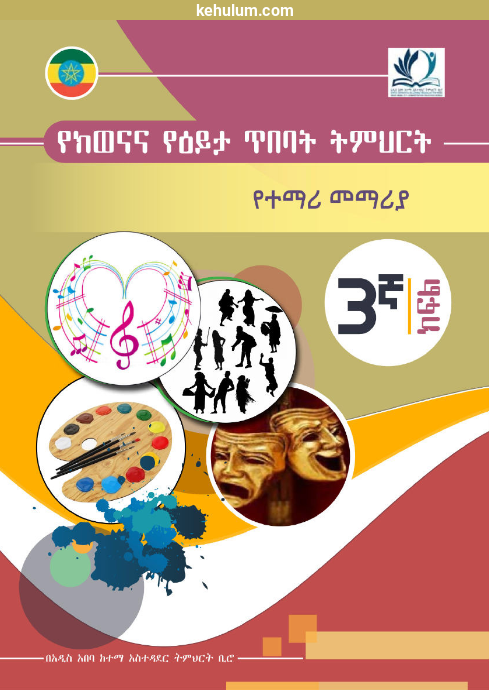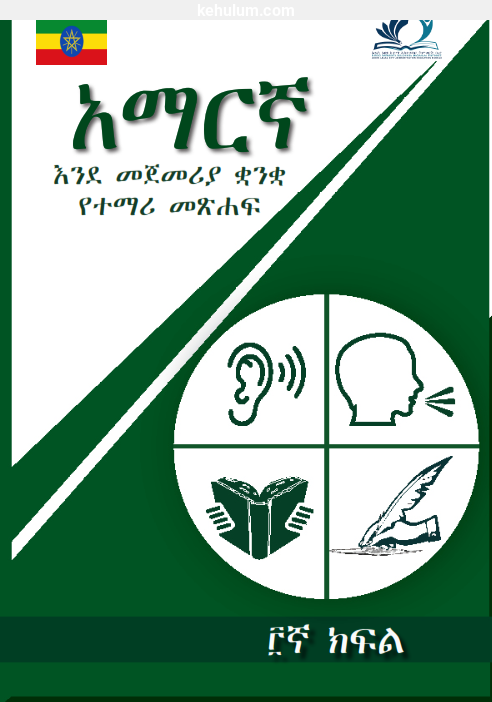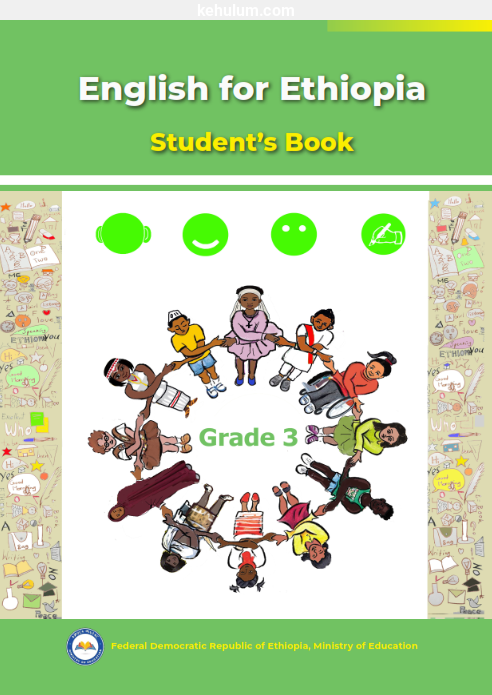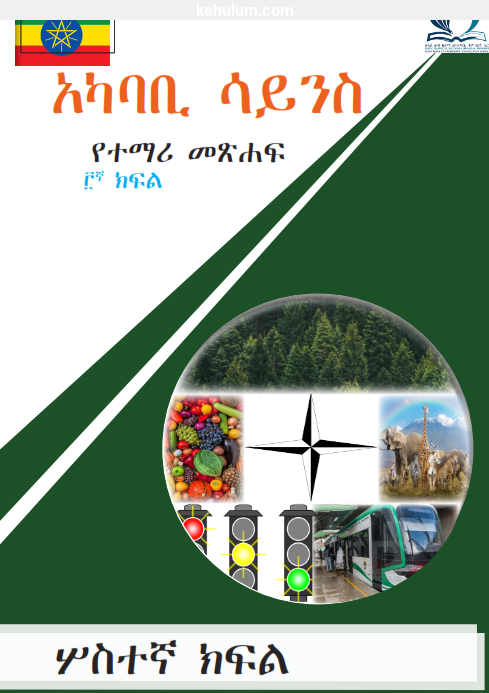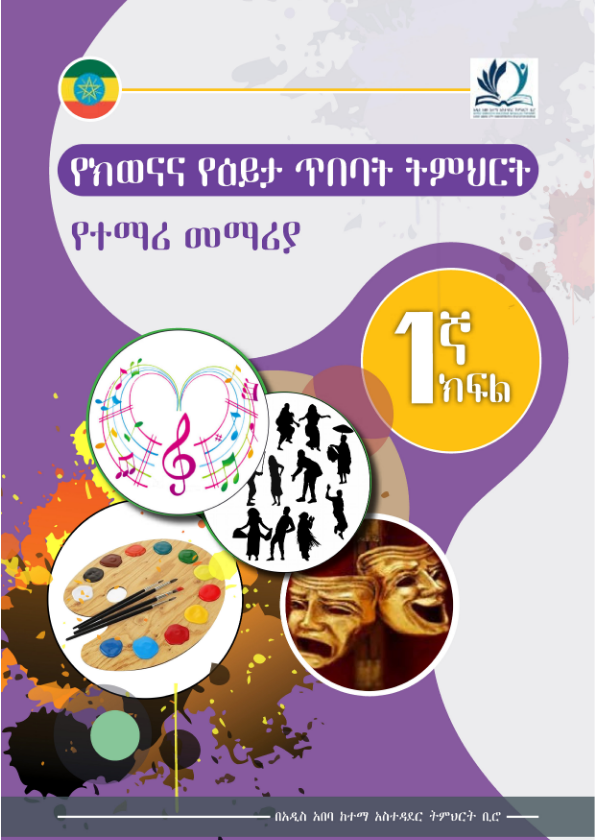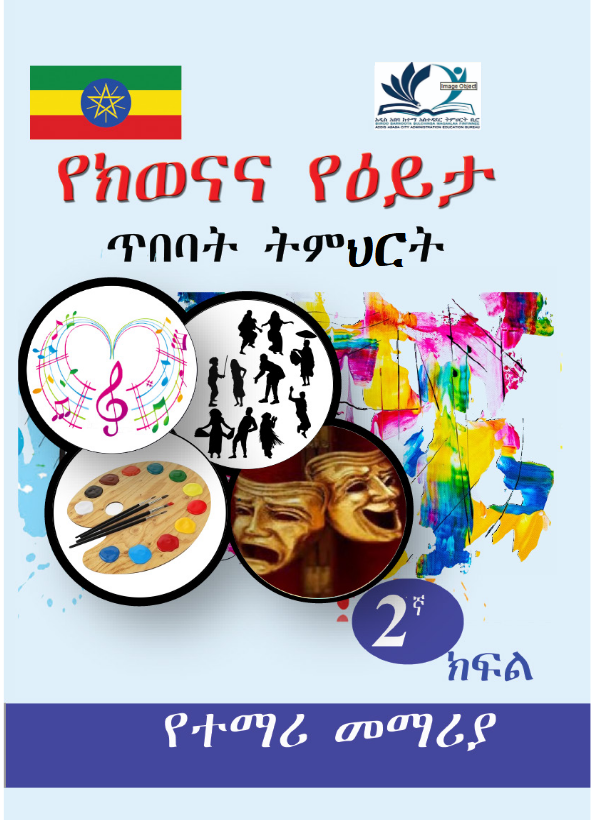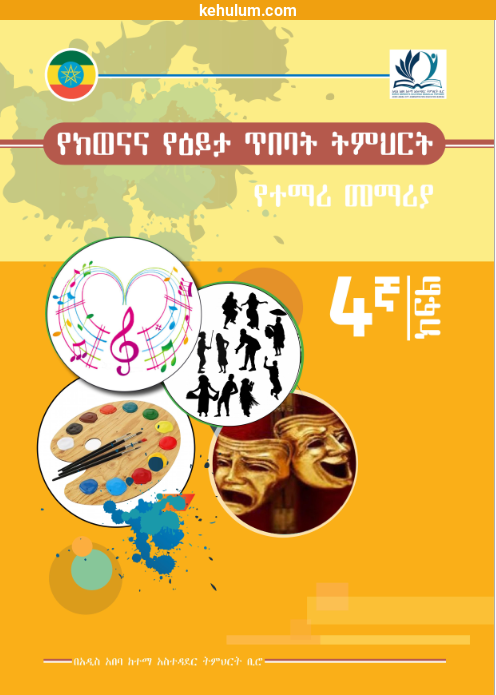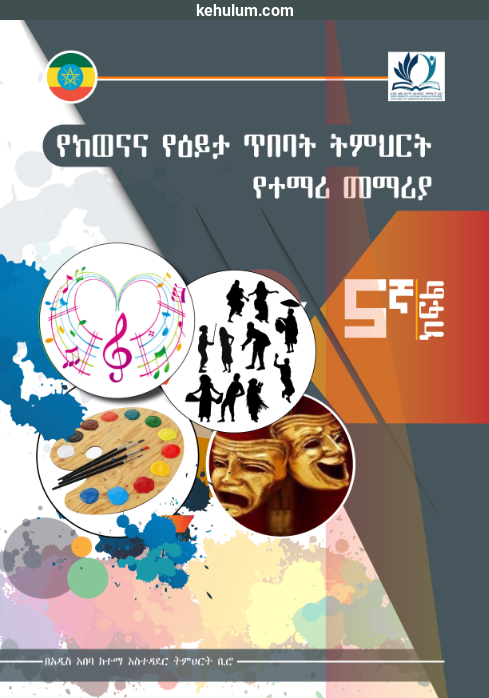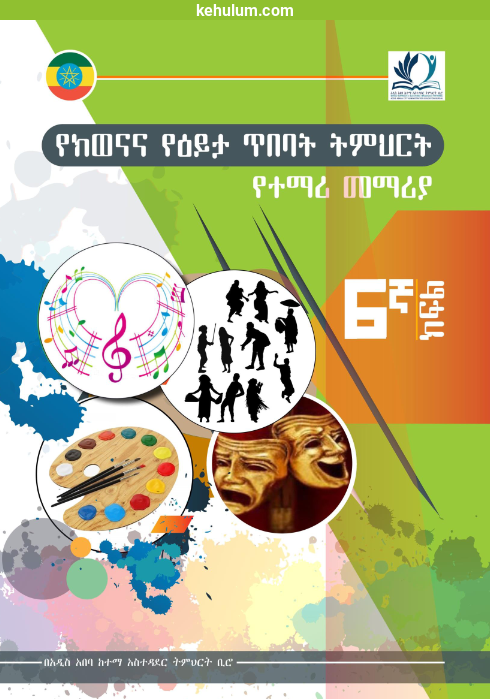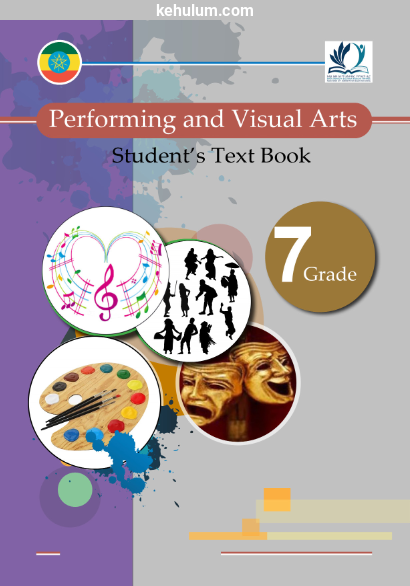The Ethiopian Grade 3 PVA Student Textbook contains 5 chapters, designed to develop students’ understanding, creativity, and appreciation of performing and visual arts. Each chapter integrates practical exercises in music, dance, theater, and visual arts while linking cultural and aesthetic knowledge.
Chapters are:-
- ምዕራፍ 1: ጥበባዊ ግንዛቤ
- ምዕራፍ 2: ፈጠራን መግለፅ
- ምዕራፍ 3: ባህልን መግለፅ
- ምዕራፍ 4: ሥነ-ውበታዊ እሴት (ዋጋ)
- ምዕራፍ 5: ጥመርታ ዝምድና እና ትግበራ
Chapters Overview
Chapter 1: Artistic Understanding / ጥበባዊ ግንዛቤ
Students develop foundational artistic understanding. They will:
- Distinguish musical notes from whole to quarter notes, including rest marks.
- Identify and mix basic colors.
- Learn simple photography techniques.
- Practice basic dramatization methods.
Chapter 2: Defining Creativity / ፈጠራን መግለፅ
Focuses on expressing creativity through practical exercises. Students will:
- Interpret messages, images, and actions from sound and visual media.
- Play musical notes with simple instruments.
- Perform singing, dancing, and acting out family roles.
- Engage in drawing, color mixing, printing, and painting activities.
Chapter 3: Historical and Cultural Context / ባህልን መግለፅ
Emphasizes cultural understanding and appreciation of Ethiopia’s artistic heritage. Students will:
- Understand national culture and multicultural performing arts.
- Learn traditional music, dance, and drama.
- Read stories about famous figures in art.
- Act out family roles through singing, dancing, and role-playing.
- Present local art in musical and dramatic forms.
Chapter 4: Aesthetic Value / ሥነ-ውበታዊ እሴት (ዋጋ)
Focuses on developing appreciation for the arts. Students will:
- Appreciate national music through performance.
- Present local art via songs and performances.
- Recognize aesthetic values in traditional performing and visual arts.
- Understand the role of art in Ethiopia’s cultural identity.
Chapter 5: Integrating Our Relationships / ጥመርታ ዝምድና እና ትግበራ
Teaches the interconnectedness of different art forms and teamwork. Students will:
- Present local art through singing, dancing, role-playing, and painting.
- Appreciate the combined works of Ethiopian performing and visual arts.
- Develop collaborative skills by integrating music, dance, theater, and visual arts in group projects.

